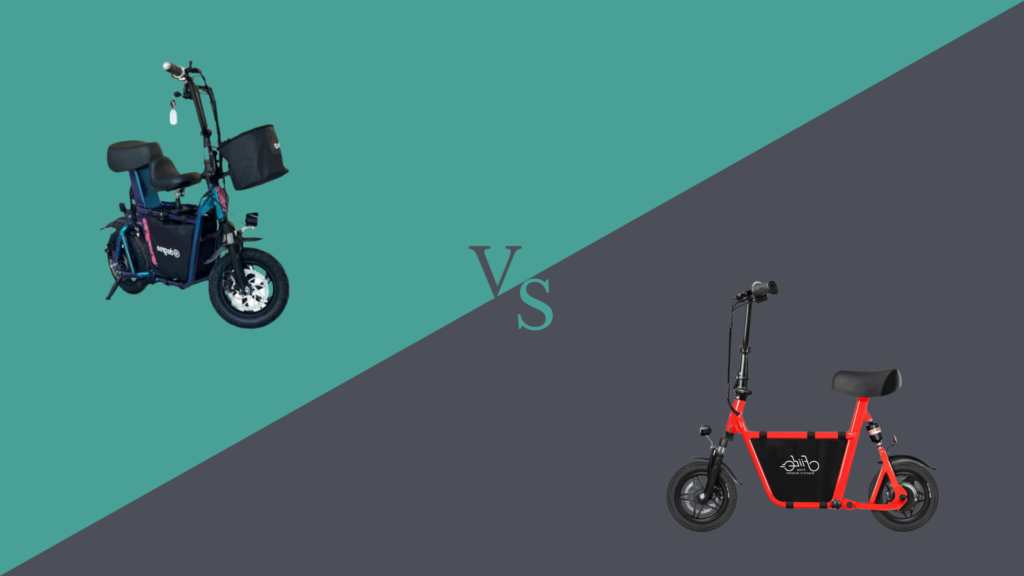
When it comes to choosing a seated electric scooter for urban commuting, two models often come up in discussions: the Edegree FS1 and the Fiido Q1S. Both scooters offer a blend of comfort and functionality, but they cater to slightly different needs and preferences. In this blog post, we’ll delve into a side-by-side comparison of these two popular e-scooters, examining their specifications, features, and usability to help you decide which might be the better fit for your daily travels.
Performance and Battery Life
Starting with performance, the Edegree FS1 is equipped with a 48V 350W brushless geared motor, which allows it to reach a maximum speed of 40 KM/H. This makes the FS1 a strong contender for those who need a bit more speed in their daily commute. It offers a range of 35-40 KM, which is sufficient for most urban environments, though it may fall short for longer commutes.
On the other hand, the Fiido Q1S features a slightly less powerful 250W motor but compensates with a superior range. It can travel up to 55 KM on a single charge, making it ideal for riders who have longer distances to cover. However, its maximum speed caps at 30 km/h, which, while safer in crowded city spaces, may not satisfy speed enthusiasts.
Design and Build
Both scooters are well-designed, but with different focuses. The Edegree FS1 emphasizes utility and robustness, with a weight of 23kg and features like front and rear suspension, and a comprehensive braking system that includes both front and rear disc brakes. This makes the FS1 a durable choice for varied urban terrains.
The Fiido Q1S, lighter at 18kg due to its aluminum alloy frame, is easier to maneuver and more portable, especially when folding and storing the scooter is a concern. Its design is sleek and modern, and it offers adjustable saddle height, which is a bonus for users of different heights looking for a comfortable ride.
Comfort and Usability
For comfort, both models sport 12-inch pneumatic tires that provide a smooth ride on city streets. The FS1, however, goes a step further by incorporating a child seat and additional storage options like a front basket and middle bag, making it highly practical for parents on the go or those who need to carry extra items during their commute.
In contrast, the Fiido Q1S keeps things simpler and more streamlined, which might appeal to users who prefer a minimalist design without the extra bulk. Its folding capabilities also make it a better option for those who may need to carry their scooter on public transport or store it in compact spaces.
Security and Additional Features
One of the standout features of the Edegree FS1 is its security enhancements. It comes equipped with two anti-theft alarms and remote controls, providing peace of mind in urban settings where scooter theft can be a concern. The FS1 also includes key ignition, adding an extra layer of security.
While the Fiido Q1S lacks the advanced security features of the FS1, it maintains a focus on essential functionalities, ensuring that users have a reliable and efficient ride without the complexity or need for additional security gadgets.
Conclusion: Edegree FS1 VS Fiido Q1S
Choosing between the Edegree FS1 and Fiido Q1S ultimately depends on your specific needs. If you prioritize speed, extra security, and the ability to transport more than just yourself, the FS1 might be the right choice. Its robust features and additional storage capabilities make it an excellent scooter for diverse urban demands.
However, if you’re looking for a lightweight, straightforward scooter with a longer range and easy storage, the Fiido Q1S could be the better option. Its extended range and lightweight design cater well to those with longer commutes or who value simplicity and portability.
Both seated e-scooters offer a blend of functionality and comfort, making urban mobility easier and more enjoyable. Whichever model you choose, you’ll be investing in a reliable companion for your daily travels.

Wish there were more images and videos for a better visual representation, but great information nonetheless!
Thank you for your feedback, Ryan! We appreciate your suggestion about adding more images and videos to enhance the visual representation of the review. We’ll take this into consideration for future blog posts. If you have any specific preferences for the types of content you’d like to see, please don’t hesitate to let us know. You can also reach out to us directly at [email protected] or +60 3-7890 3042 for any further questions or concerns.
Been eyeing these two scooters, finally I know which one fits my needs. Thanks for the thorough review!
Hi Kim Leong, we’re glad that our review helped you decide on the perfect electric scooter for your needs. If you have any further questions or concerns, feel free to reach out to us at [email protected] or call us at +60 3-7890 3042. Happy riding!
Love it when blogs provide detailed comparisons of products. Helps me make informed decisions before buying!
Hi Justin, we’re glad you found our comparison useful! At Eko Life Malaysia, we strive to provide detailed and unbiased reviews to help our readers make informed decisions. If you have any more questions or need further clarification, please don’t hesitate to contact us at [email protected] or +60 3-7890 3042.